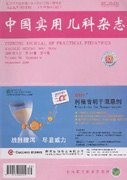|
Clinical phenotypes of epilepsy related to CHD2 gene mutations:A report of 18 patients
CHEN Jiao-yang*,ZHANG Yue-hua, ZHANG Jing, et al
2020, 35(4):
289-294.
DOI: 10.19538/j.ek2020040611
Objective To summarize the characteristics of phenotypes of epilepsy related to CHD2 gene mutation. Methods A total of 18 patients of epilepsy patients with CHD2 gene mutations were collected from Jan 2014 to Mar 2019 in Peking University First Hospital. Their phenotypes were analyzed. Results In 18 patients,the seizure onset age ranged from 3 months to 10 years 5 months,and the median age was 26.5 months. In the course of epilepsy,Generalized tonic-clonic seizures(GTCS) were observed in 11 patients,myoclonic seizures in 7 patients,focal seizures in 5 patients,atonic seizures in 4 patients and atypical absence in 4 patients. Myoclonic-atonic seizures were observed in 3 patients,and epileptic spasm in 2 patients. Video-Electroencephlogram(VEEG) were abnormal in 16 patients,all of them had epileptiform discharges during interictal phase. Eight patients were captured clinical seizures by VEEG. VEEG were normal in two patients. Motor and mental retardation presented in 15 patients. The autism features occurred in seven patients. Two patients were diagnosed with epilepsy with myoclonic-atonic seizures,two with Lennox-Gastaut syndrome,two with febrile seizures plus,and one with West syndrome. The age of the last follow-up ranged from 3 years 5 months to 18 years. Seizures were controlled more than half a year in 10 patients,and valproate and levetiracetam were effective drugs for epilepsy ralated to CHD2 gene mutations. Conclusion Seizure types are various in epilepsy related to CHD2 gene mutations. More than half patients have multiple seizure types. Generalized seizures and myoclonic seizures are common. Most patients have developmental delay. More than half of the patients achieve seizure-free.
|

